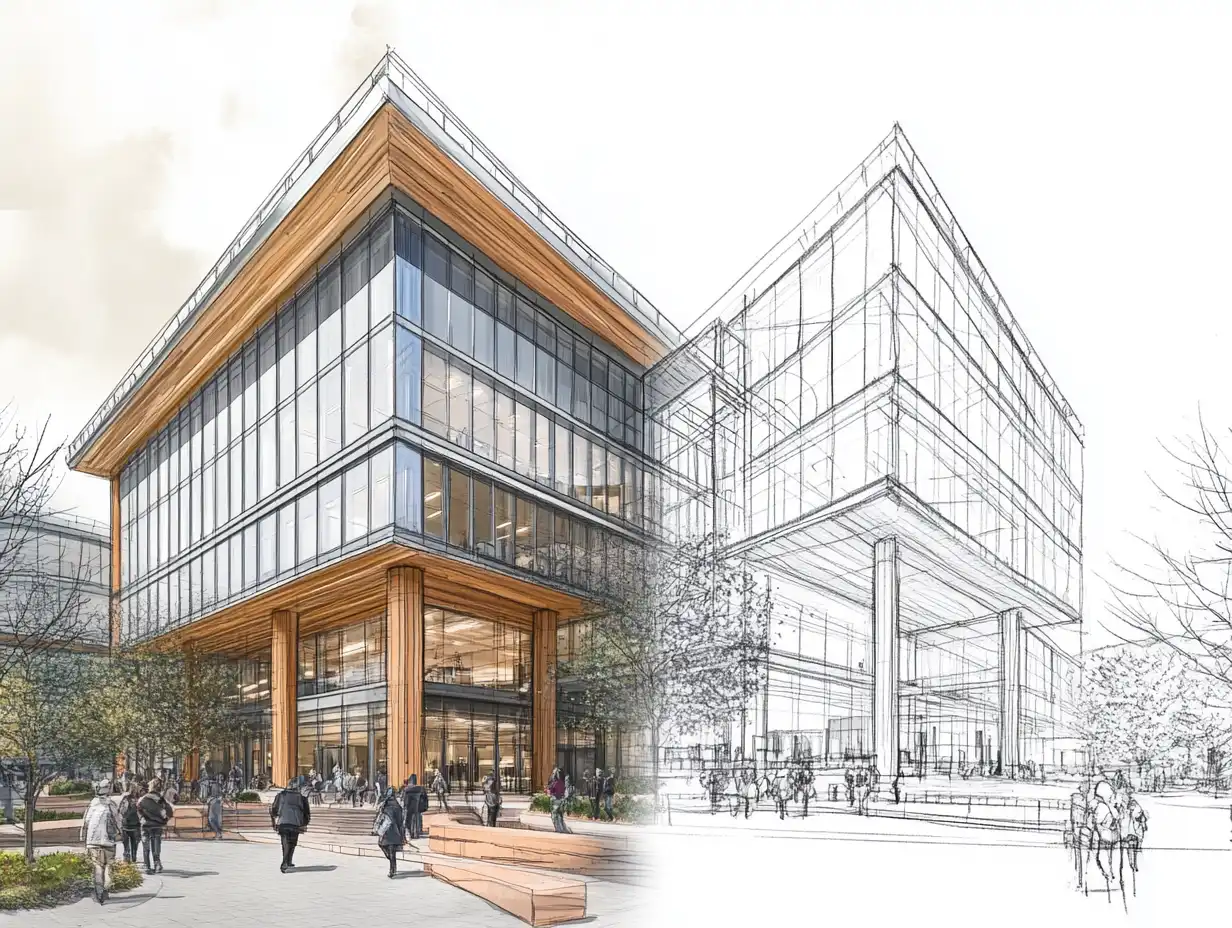In the ever-evolving world of architecture, 3D modeling has become a cornerstone for professionals aiming to bring their visions to life. Yet, finding affordable software that doesn’t compromise on quality can feel like searching for a needle in a haystack. We’re here to help you navigate this landscape and find the best tools that won’t break the bank.
Affordable 3D architectural modeling software doesn’t just save us money—it empowers us to create detailed, stunning designs without sacrificing performance. Whether you’re a seasoned architect or a budding designer, having the right software can make all the difference. Let’s explore some top options that offer both affordability and robust features, ensuring our projects are both cost-effective and cutting-edge.

Overview of Affordable 3D Architectural Modeling Software
3D architectural modeling software enables architects to create detailed designs efficiently. These tools offer features like rendering, animation, and simulation, which are essential for accurate presentations. Affordability and quality are crucial when selecting software for professional use. Below, we explore several options that balance cost and functionality.
SketchUp
SketchUp is popular for its intuitive interface and extensive 3D model library. Users can create complex architectural designs without a steep learning curve. With options for both free and paid versions, SketchUp meets various budget requirements and offers plugins for enhanced capabilities.
Blender
Blender is an open-source tool known for its powerful 3D modeling and animation features. Professionals opt for Blender due to its robust set of tools at no cost. Its active community contributes to ongoing improvements and extensive tutorials.
Rhino
Rhino offers precision and flexibility in 3D modeling with its advanced tools for creating complex geometries. Professionals favor Rhino for its affordability compared to other high-end software. It supports numerous file formats, ensuring compatibility with various design workflows.
BricsCAD
BricsCAD combines 2D drafting and 3D modeling in one package. It’s an affordable alternative to more expensive CAD software and provides a familiar interface for AutoCAD users. BricsCAD’s cost-effectiveness and comprehensive features make it a strong contender for architectural professionals.
Sweet Home 3D
Sweet Home 3D focuses on interior design and supports both high-quality visualizations and ease of use. Architects and designers use Sweet Home 3D for its affordability, particularly in initial design stages. The software also includes a user-friendly drag-and-drop interface.
FreeCAD
FreeCAD is an open-source software tailored for parametric 3D CAD. It’s suitable for architectural modeling with features that allow detailed customizations. Professionals leverage FreeCAD for budget-friendly yet powerful modeling solutions. Its modular architecture facilitates adaptation to various design needs.
Tinkercad
Tinkercad provides a browser-based platform for 3D modeling and is beginner-friendly. While not as feature-rich as other software, Tinkercad’s simplicity and zero cost make it a good starting point for small projects. Professionals often use it for quick mockups and to introduce new team members to 3D modeling.
In summarizing these tools, it’s evident that affordable 3D architectural modeling software offers diverse options to meet specific needs. Each software mentioned provides unique advantages, from ease of use to advanced features, ensuring that professionals can choose the best fit for their projects and budgets.

Key Features to Look For
Affordable 3D architectural modeling software requires key features to balance cost and functionality. We’ll explore user-friendliness, rendering quality, integration, and customer support.
User-Friendliness
User-friendliness impacts productivity. A clean, intuitive interface allows quick adaptation. Software like SketchUp and Tinkercad provide easy-to-use layouts, enabling users to create designs with minimal training. Drag-and-drop features plus customizable toolbars streamline workflows.
Rendering Quality
Rendering quality affects presentation. High-quality rendering capabilities, including real-time previews and photorealistic outputs, enhance design visualization. Blender and Rhino offer advanced rendering features like ray tracing and texture mapping, helping create professional-grade visuals.
Integration with Other Tools
Integration with other tools boosts efficiency. Software should seamlessly connect with CAD, BIM, and project management tools. BricsCAD and FreeCAD enable smooth file exchanges with popular formats like DWG and IFC, supporting better collaboration and comprehensive project management.
Customer Support
Customer support ensures smooth operation. Reliable customer service helps resolve issues promptly, ensuring minimal downtime. Look for software with robust support options including forums, tutorials, and direct assistance. SketchUp and Sweet Home 3D offer extensive online resources to aid users.
These features help professionals select suitable, affordable 3D modeling software tailored to their project needs.

Top Affordable Software Options
Professionals in architecture require cost-effective yet powerful 3D modeling software. Let’s explore some top affordable software options fit for architectural needs.
Blender
Blender stands out for its extensive features and zero cost. It offers advanced rendering capabilities, a robust modeling toolkit, and animation tools. Blender supports a wide range of plugins, making it versatile for various design requirements.
SketchUp
SketchUp boasts an intuitive interface, making it user-friendly for both beginners and professionals. It provides essential modeling features, real-time collaboration, and an extensive library of pre-made components. The availability of both free and affordable paid versions caters to different budget needs.
Sweet Home 3D
Sweet Home 3D excels in interior design and easy navigation. It’s user-friendly with drag-and-drop functionality for designing layouts. The software includes a library of furniture, household items, and customizable textures, perfect for detailed interior visualizations.
FreeCAD
FreeCAD offers a comprehensive open-source platform. It’s suitable for parametric design, allowing users to make changes by modifying parameters. FreeCAD supports various file formats, enabling seamless integration with other tools. Ideal for those seeking a customizable and extendable solution.

Comparison of Pricing and Features
Understanding the pricing structures and key features of architectural modeling software can help us make informed decisions. Each option offers different models tailored to various needs and budgets.
Subscription Plans vs. One-Time Purchase
Subscription models, such as those offered by SketchUp, provide flexibility and affordability. Monthly or annual fees mean lower initial investment, ideal for short-term projects. For example, SketchUp’s subscription starts at around $119 per year. This approach also ensures regular updates and support.
One-time purchases can be more cost-effective long-term if we plan extensive use. Software like Sweet Home 3D offers this model. A single payment of approximately $14.99 provides ongoing access without recurring fees. This option can save money over time, especially for long-term use.
| Software | Model | Cost |
|---|---|---|
| SketchUp | Subscription | $119/year |
| Sweet Home 3D | One-Time Purchase | $14.99 |
Free and Open-Source vs. Paid Software
Free and open-source tools like Blender and FreeCAD offer robust features without financial commitment. Blender excels in rendering quality and customization, suitable for detailed projects. FreeCAD supports parametric design, useful for iterative and complex designs.
Paid options, including Rhino and BricsCAD, often provide additional professional support and advanced features. Rhino, for instance, costs about $995 and offers premium rendering and modeling capabilities. BricsCAD starts at $990 and includes extensive integration with other tools.
| Software | Type | Key Features | Cost |
|---|---|---|---|
| Blender | Free/Open-Source | Advanced rendering, customization | Free |
| FreeCAD | Free/Open-Source | Parametric design | Free |
| Rhino | Paid | Premium rendering, modeling | $995 |
| BricsCAD | Paid | Tool integration, robust support | $990 |
By comparing these options, we can choose software that aligns with our project needs and budget constraints.

Pros and Cons of Using Affordable Software
Affordable 3D architectural modeling software offers both benefits and limitations for professionals. Evaluating these aspects helps us choose the right tool for our projects.
Benefits for Professionals
Affordable Solutions: These tools minimize upfront costs, allowing us to allocate budget to other crucial areas like hardware and additional plugins.
User-Friendly Interfaces: Software like SketchUp and Tinkercad provide intuitive controls, reducing the learning curve and increasing our efficiency in completing projects.
Versatile Features: Platforms such as Blender and Rhino offer advanced rendering capabilities at a low cost, ensuring high-quality visualizations without the need for expensive software.
Integration Capabilities: Tools like BricsCAD and FreeCAD support seamless integration with other industry-standard applications, enhancing workflow and collaboration.
Community Support: Open-source options like Blender often have large communities offering tips, tutorials, and plugins, which can help us troubleshoot and improve project outcomes.
Potential Limitations
Limited Advanced Features: Affordable software may lack some of the advanced functionalities found in pricier options, which could limit complex project designs.
Performance Issues: Software at a lower price point might experience performance issues like slower rendering speeds or occasional crashes, affecting our efficiency on time-sensitive projects.
Restricted Support: Some affordable tools might offer limited customer support, making it challenging to resolve issues quickly if technical difficulties arise.
Compatibility Constraints: Affordable software may have compatibility issues with certain hardware or other software, potentially complicating our workflow and necessitating additional adjustments.
Scalability Concerns: As our project demands grow, affordable solutions might not scale effectively, requiring us to invest in more robust software to meet professional needs.

Conclusion
Affordable 3D architectural modeling software can significantly benefit professionals. These tools, such as SketchUp, Blender, or Rhino, provide cost-effective solutions for different project needs. They offer user-friendly interfaces, versatile features, and extensive community support. As we detailed, subscription plans offer flexible pricing, while one-time purchases ensure long-term savings.
However, choosing the right software is crucial. While options like BricsCAD, Sweet Home 3D, FreeCAD, and Tinkercad are budget-friendly, they might lack advanced features, face performance issues, or have compatibility constraints. Users should evaluate software based on project demands, integration capabilities, and scalability.
Investing in the appropriate 3D architectural modeling software enhances productivity and project quality without breaking the bank. Considering both pros and cons helps us make informed choices, ensuring our projects run smoothly and efficiently.
- 3D architectural visualization on a budget
- 3D CAD software for architects affordable
- 3D house design software affordable
- 3D model creation software cost-effective
- affordable 3D architectural software
- best price 3D architecture software
- budget 3D rendering software for architecture
- budget-friendly 3D architecture programs
- cheap 3D modeling software
- cost-effective 3D design tools
- cost-saving 3D architecture solutions
- discounted 3D architectural programs
- economical 3D design software for architects
- inexpensive 3D modeling for architects
- low-cost 3D architectural modeling
- value 3D building modeling software















Leave a comment